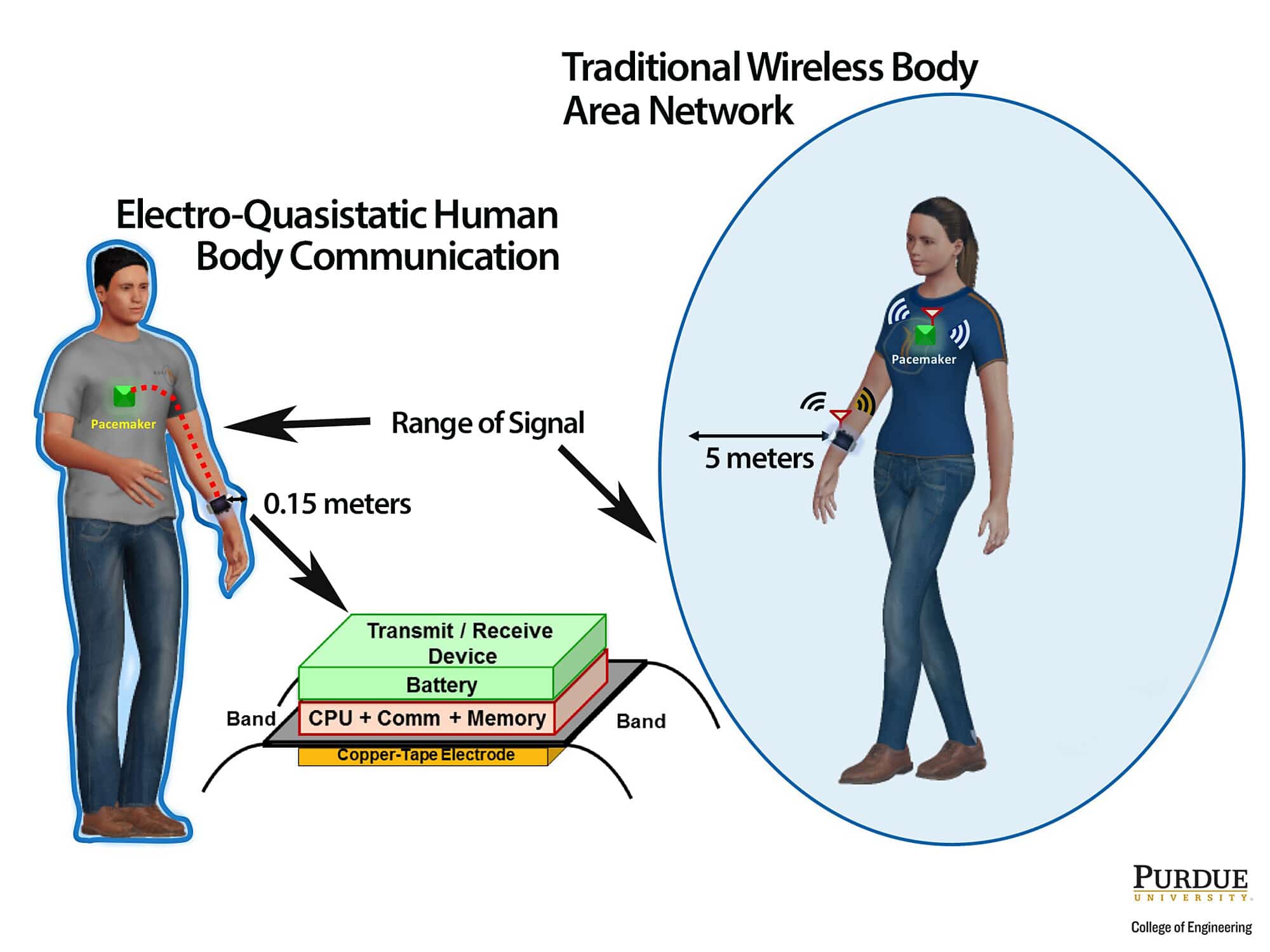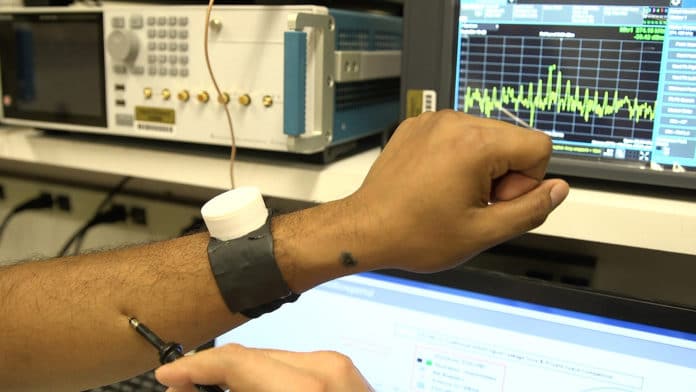Radiative communication using electro-magnetic (EM) fields amongst the wearable and implantable devices act as the backbone for information exchange around a human body. However, owing to such radiative nature of the traditional wireless communication, EM signals propagate in all directions, inadvertently allowing an eavesdropper to intercept the information.
In this context, the human body, primarily due to its high water content, has emerged as a medium for low-loss transmission, termed human body communication (HBC), enabling energy-efficient means for wearable communication. However, conventional HBC implementations suffer from significant radiation which also compromises security.
The network you didn’t know you had is only accessible by you and your devices. All credit goes to the technology that keeps communication signals within the body itself.
What if someone could hack into your pacemaker or insulin pump and potentially kill you, just by intercepting and analyzing wireless signals?
Well, this has not yet happened in real life, still scientists, by analyzing the potential of the internet of the body, have been demonstrating for at least a decade that it’s possible.
Now, scientists at Purdue University have tightened security on the internet of the body. They have demonstrated a way for human body communication to occur more securely – not going beyond a centimeter off the skin and using 100 times less energy than traditional Bluetooth communication.
This is possible through a device that couples signals in the electro-quasistatic range, which is much lower on the electromagnetic spectrum. Now, scientists are working with government and industry to incorporate this device into a dust-sized integrated circuit.
Through a prototype watch, a person can receive a signal from anywhere on the body, from the ears all the way down to the toes. The thickness of your skin or hair also doesn’t really make a difference in how well you carry the signal.

Shreyas Sen, an assistant professor of electrical and computer engineering at Purdue said, “We’re connecting more and more devices to the human body network, from virtual reality displays. The challenge has not only been keeping this communication within the body so that no one can intercept it, but also getting higher bandwidth and less battery consumption.”
“Body fluids carry electrical signals very well. So far, so-called “body area networks” have used Bluetooth technology to send signals on and around the body. These electromagnetic waves can be picked up within at least a 10-meter radius of a person.”
“Our idea is expected to create a way for doctors to reprogram medical devices without invasive surgery. The technology would also help streamline the advent of closed-loop bioelectronic medicine – in which wearable or implantable medical devices function as drugs, but without the side effects – and high-speed brain imaging for neuroscience applications.”
“We show for the first time a physical understanding of the security properties of human body communication to enable a covert body area network so that no one can snoop important information.”
The study is published in the journal Scientific Reports. Other coauthors Debayan Das, Shovan Maity and Baibhab Chatterjee.
